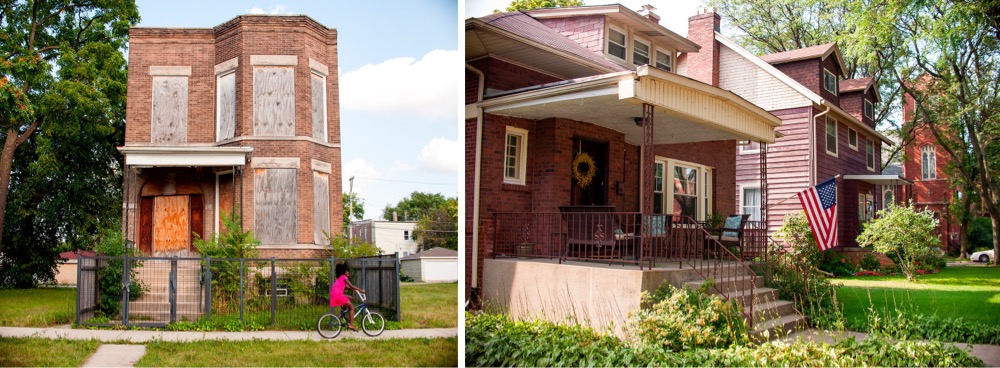
Tonika Johnson’s Folded Map Project explores the differences and similarities across this boundary by comparing an addresses on the North Side with the corresponding addresses on the South Side of Chicago.
In an interview by Paulette Beete for Colossal:
The ultimate point that I was trying to get across was that Chicago’s history of segregation is still with all of us today. I wanted to prove this point for people who might not make that connection [between] the disparity that exists and the history behind it. I wanted the project to be an entree into expanding people’s minds of Chicago’s history of segregation through thinking about their own lived experience. I really appreciated being able to do that through art, through photos and portraits and video because I wasn’t blaming people who live on these different sides. I was offering them insight into the larger question of, “did you really choose this? Does our segregation reflect how we want to interact? And if it doesn’t, then you have to question why is it this way?”
There is this narrative that people think [Chicagoans] don’t interact. But we do, a lot, especially through art. That’s how we know the city is segregated. (laughing) We know that we’re disrupting this segregation when we come together. And that’s why I think art is such a beautiful common denominator.
This project is a reminder of the economic inequality and the effects of America’s historical segregation policies far reaching effects. Which are still on display, for anyone who cares to notice.